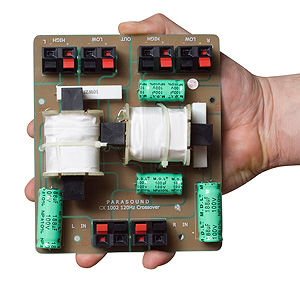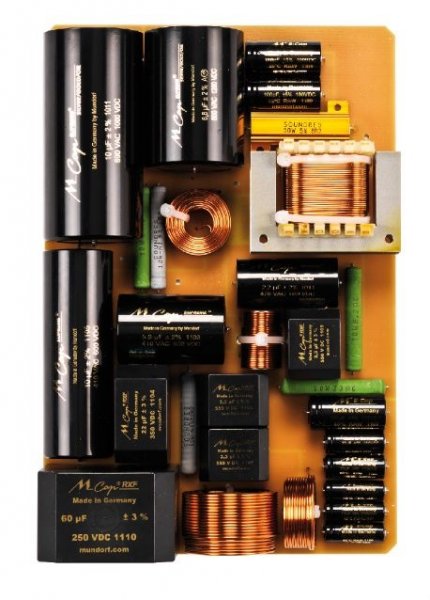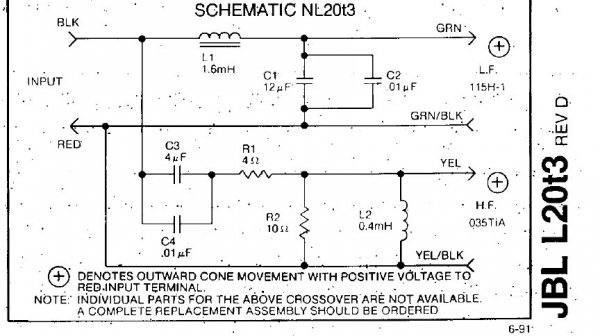thought it might be good to hear from an actual speaker designer as well.
Roger Sanders, from Sanders Sound Systems is a person I deeply admire and whose opinion on ESL and audio topics in general I deeply respect.
In an interview, he clearly explains his position on active vs passive and some of the benefits of actives:
"Passive crossovers have dreadful performance. This is another extensive topic that I cannot address adequately in this interview. So just allow me to summarize by saying that passive crossovers have the well-known problems of phase shift, hysteresis losses, group delay, inadequately steep crossover slopes, and distortion. Less appreciated is the fact that they insert inductors, capacitors, and resistors between the amplifier and the speaker's drivers. This isolates the woofer from the amplifier and prevents the amplifier from having tight control of the driver. Or to put it another way, the damping factor of the amplifier is degraded by passive crossovers.
Since it is essential to use the amplifier to control the woofer, the amplifier must be connected directly to its driver without any intervening crossover components. Therefore electronic/active crossovers are essential to obtaining good integration. The amplifier must have a high damping factor. This excludes the use of tube amplifiers for driving woofers because their output impedance is too high. Powerful, well-designed solid state amplifiers have incredibly low output impedance (typically less than 0.1 Ohm), and massive current flow capacity, so they have the high damping factor and power needed to really control a woofer.
It is necessary to use electronic/active crossovers to achieve the best from any speaker system. I continue to be amazed by all the speakers on the market with passive crossovers that claim to be "reference" quality or SOTA systems. The truth is that electronic/active crossovers and multiamplifier systems are superior to any passive crossover system. All speakers will be improved with the proper use of electronic/active crossovers. So any speaker that uses passive crossovers simply cannot be considered the finest available. I am unwilling to compromise and so do not use passive crossovers in any of my current speakers.
There are many diverse types of electronic/active crossovers with many different features. Also, both analog and digital electronic crossovers now are available. I consider digital crossovers to be one of the greatest advances in modern audio. They offer features that I have wanted crossovers to have for years, but which were unavailable. "
From this article: http://www.dagogo.com/View-Article.asp?hArticle=991
Based on all my experience, Roger is 100% correct.
This passionate interview only addresses technical issues, as far as I know the thread topic is the sonic benefits of an active crossover. Unless these technical aspects are correlated with sound quality they are just technical opinions from a single speaker manufacturer.
The main technical argument is on the effect of the passive crossover in the damping factor. It is not proved that an infinite damping factor is needed to have good sound. Effectively, some speakers known to have exceptional bass performance have controls to adjust the low bass damping for proper optimization of sound quality in your room. Some speaker designers use the passive crossover to damp the resonances of the speaker.
This does not mean that a good damping factor is a nice thing for bass performance - surely an amplifier for subwoofer must have very low output resistance. But I am not prepared to sacrifice all the good things I listen to in excellent passive speakers coupled with excellent amplifiers just to have a little better low bass performance. For me music is much more than listening to a test recording of a drummer playing at high level in my room.
All IMHO. But I would love to know if all your experience. is just your own system.
Last edited:

















